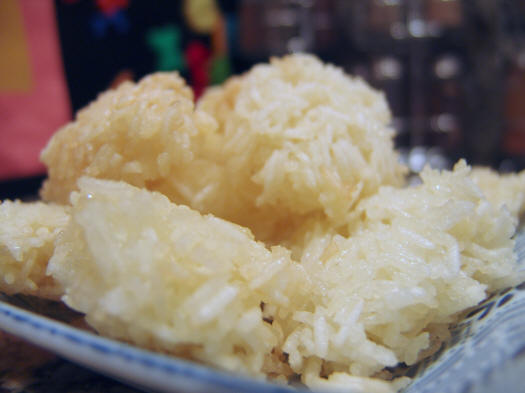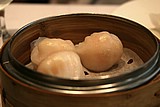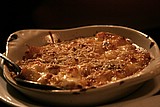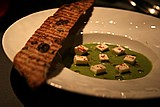Home |
Restaurants by City
|
Food Photography |
Archive | Philosophy |
![]()
Right now we are eating in Seattle, Washington.
|
Wednesday
2005
Permalink |

Menu for Hope, Food Bloggers for Tsunami Relief, February 2, 2005 I really have no way to imagine what kind of devastation the tsunami has wrought. It seems impossible to have any real perspective on this event. That said, we would like to do something, however small, from our end of the blog world. Thanks to Pim of Chez Pim for putting together this Menu for Hope - a tsunami relief tasting menu. This recipe was adapted by me from Hot Sour Salty Sweet: A Culinary Journey Through Southeast Asia by Jeffrey Alford. This is an absolutely beautiful book. There's nothing wrong with the original recipe other than that I typically want to make these last minute and I don't have grated coconut on hand (fresh or frozen). But I do have coconut milk typically. Mix 1 large egg. 1/2 teaspoon salt, 1/2 teaspoon sugar, and 1/4 cup of coconut milk together in a bowl. Once the mixture is integrated mix it well with 5 cups of freshly cooked or leftover jasmine rice. You don't want too much gloppiness as these balls need to stick together in the deep fryer. hold back some liquid or add more rice to get a good consistency. (If you have grated coconut use that instead of coconut milk and you can use only 4 cups of rice.) Let the entire mixture sit in the fridge for 30 minutes. While the rice mixture gets more suitable for making into balls, make the sauce. Everyone has their own particular preference when it comes to the following type of classic Thai dipping sauce. I list the ingredients here and let you decide what quantities to use. Mix together: thai fish sauce, sugar, lime juice, minced scallions, minced cilantro, and minced chilis. When the rice has been in the fridge long enough, heat enough peanut oil in a deep pot to cover the balls you'll form by at least a half inch. In the meantime, form the rice into 1 inch balls. When the oil is hot, gently drop the rice balls into the oil. Cook them for 1-2 minutes. They will start to turn brown. Remove them with onto paper towels and serve immediately with the sauce.
I know that there is just good wishes and positive sentiment behind this recipe and the others that make up the menu. But hopefully that can help spark some additional giving. Please do what you can and click on the links to other dishes above and especially the Unicef button. Thanks.
|
|
Our Sponsors
Free Car Listings Hot Tubs Stools Saunas Bar Stools - Calendar and Event Schedules - Food Events and Calendars - Wine Events and Calendars - Digital Photography Resources - Software for Advertisers - Jewish Gifts and Judaica - Howard Stern Podcast - ponytailed blogger Jonathan Schwartz

Browse tastingmenu
Home |
Restaurants by City X |
Food Photography |
Archive | Philosophy |
![]()
Free eBooks: All About Apples
| Autumn Omakase
More:
Discussion |
Cool Food T-Shirts |
Ingredients
| Markets |
Recipes
Search |
Blog FAQ |
Other
Blogs
Best of tastingmenu
|
City View
Entry: July 6, 2006 |
Blue Plate
Entry: June 19, 2006 |
L'Atelier de Joël Robuchon
Entry: July 18, 2006 |
Browse by City
Boston | Chicago | Houston | Las Vegas | Los Angeles | Maui | New York | Philadelphia | Portland | San Francisco | Seattle | Toronto | Utah | Vancouver | Washington D.C.
Bangkok | Beijing | Hong Kong | Seoul | Tokyo
Amsterdam | Berlin | Italy | London | Madrid | Paris | Vienna
Browse by Month
2006
2005
2004
2003
2002
2001
Comments, questions, or feedback:
info / at / tastingmenu / dot / com
All pages Copyright (c) 2001-2006 tastingmenu.com
Last modified 01/30/07.




